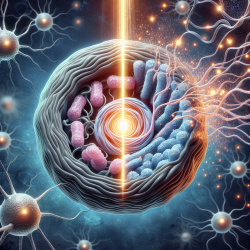Introduction
Alzheimer's disease is a complex neurodegenerative disorder characterized by memory loss and cognitive decline. Recent research has uncovered a potential breakthrough in understanding the disease's progression: the role of tubulin tyrosination in synaptic function. This blog explores the findings from a study titled Tubulin tyrosination regulates synaptic function and is disrupted in Alzheimer’s disease, and how practitioners can leverage these insights to improve therapeutic approaches.
The Role of Tubulin Tyrosination
Microtubules, essential components of the neuronal cytoskeleton, are involved in maintaining synaptic function and plasticity. The tubulin tyrosination/detyrosination cycle is crucial for microtubule dynamics, with implications for neuronal health. In Alzheimer's disease, this cycle is disrupted, leading to synaptic dysfunction.
Key Findings from the Study
- TTL (Tubulin Tyrosine Ligase) heterozygous mice showed reduced tyrosinated microtubules and synaptic deficits.
- Decreased TTL expression was observed in both sporadic and familial Alzheimer's disease cases.
- Dynamic microtubules protect synapses from amyloid-beta peptide toxicity, a hallmark of Alzheimer's pathology.
Implications for Practitioners
Practitioners can consider the following strategies based on the study's findings:
- Research and Development: Encourage further research into drugs that can modulate the tubulin tyrosination/detyrosination cycle, potentially offering new therapeutic avenues.
- Therapeutic Interventions: Explore treatments that enhance TTL expression or mimic its effects to protect synapses from Alzheimer's-related damage.
- Patient Monitoring: Monitor synaptic health and microtubule dynamics in patients as potential biomarkers for disease progression and treatment efficacy.
Conclusion
The study highlights the importance of maintaining a balanced tubulin tyrosination/detyrosination cycle for synaptic health. By understanding and manipulating this cycle, practitioners may develop novel treatments that mitigate synaptic damage in Alzheimer's disease. This research opens new pathways for therapeutic intervention, emphasizing the need for continued exploration in this promising area.
To read the original research paper, please follow this link: Tubulin tyrosination regulates synaptic function and is disrupted in Alzheimer’s disease.










